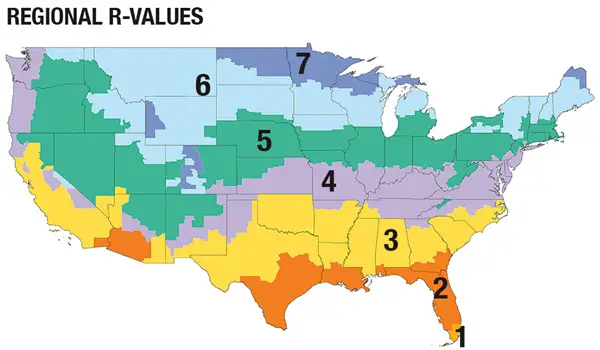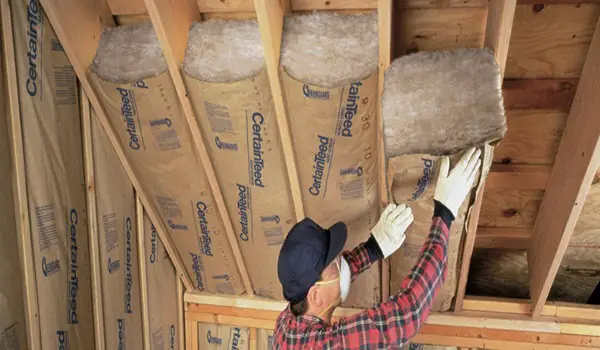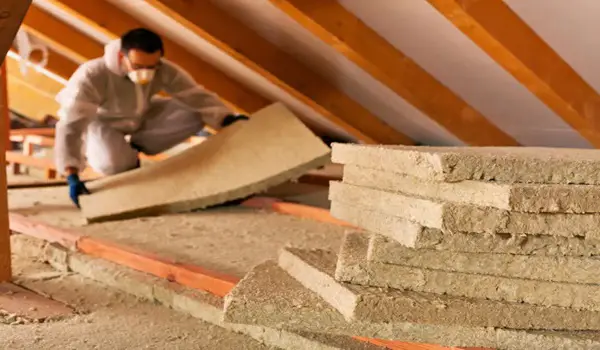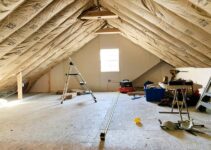R-value for Garage Ceilings
The garage, often overlooked in the realm of home insulation, plays a crucial role in energy conservation and maintaining a comfortable living space.
One of the key components in this process is the insulation of the garage ceiling. I’ll unravel the mysteries of the elusive R-value, deciphering its significance and understanding the factors that shape its requirements.
In this article, I will not only teach the theory; I’ll walk you through practical considerations from the ins and outs of choosing the right insulation material to the hands-on installation process, consider this your comprehensive guide created by someone who has worked in the trenches.
The Importance of Garage Ceiling Insulation
Many homeowners view the garage as a separate entity from the main living space, neglecting its impact on overall energy efficiency.
However, a well-insulated garage ceiling can prevent heat loss and contribute significantly to energy conservation.
By minimizing heat transfer between the garage and the home, insulation aids in maintaining a consistent indoor temperature, reducing the workload on your heating and cooling systems.
Understanding R-value and Its Impact on Energy Efficiency

Central to the effectiveness of insulation is the concept of R-value. This metric quantifies an insulation material’s resistance to heat flow, with higher values indicating better insulation.
For garage ceilings, R-values typically range from R-13 to R-49. The recommended R-value varies based on your climate zone, reflecting the diverse insulation needs across different regions.
Factors Influencing R-value Requirements for Garage Ceilings
Determining the appropriate R-value for your garage ceiling involves considering several factors. Climate zone, garage usage, and heating/cooling needs all play pivotal roles. As a general guide:
- Climate Zone 1 (Warmest): R-13 to R-19
- Climate Zone 2: R-19 to R-25
- Climate Zone 3: R-25 to R-30
- Climate Zone 4: R-30 to R-38
- Climate Zone 5 (Coldest): R-38 to R-49
These recommendations ensure that your garage ceiling insulation is optimized for your specific environmental conditions.

Determining the R-value for Garage Ceiling
Identifying your climate zone is the first step in determining the suitable R-value for your garage ceiling. Consider your garage usage whether it’s solely for vehicle storage or serves as a multi-purpose space.
Factor in your heating and cooling needs, as these influence the insulation requirements. Consulting local building codes is crucial, as they may specify specific R-value requirements to ensure compliance with regional standards.
Choosing the Right Insulation Type for Your Garage Ceiling
Selecting the appropriate insulation type is equally important as choosing the right R-value. Three common types stand out: batt insulation, blown-in insulation, and spray foam insulation.
- Batt Insulation: This cost-effective option is easy to install and comes in pre-cut panels, making it suitable for standard garage ceiling structures.
- Blown-In Insulation: Ideal for irregular spaces and hard-to-reach areas, blown-in insulation provides flexibility in installation, ensuring complete coverage.
- Spray Foam Insulation: Offering superior R-value and efficient air sealing, spray foam insulation forms a continuous barrier, minimizing heat transfer.
Consider your garage’s structural characteristics and your budget when choosing the insulation type that best suits your needs.
Installation Methods for Garage Ceiling Insulation
Whether you opt for a do-it-yourself approach or enlist the help of professionals, the installation method is critical to the insulation’s effectiveness.
DIY Installation: Detailed Instructions for Batt Insulation
For the cost-conscious homeowner, batt insulation offers a straightforward DIY installation process. Begin by gathering necessary tools and materials, ensuring you have the correct R-value panels.
Prepare the garage space by clearing any obstructions, and follow detailed installation instructions, securing panels in place and sealing gaps to prevent heat leakage. Adhering to safety precautions during installation is paramount.
Professional Installation: Advantages of Hiring a Qualified Contractor

While DIY is an option, professional installation comes with its set of advantages. Qualified contractors possess the expertise to navigate complex installations, ensuring optimal coverage and minimizing the risk of heat loss.
Professionals may uncover hidden issues during installation, providing an opportunity for immediate resolution.
Cost Considerations for DIY Versus Professional Installation
The decision between a DIY approach and professional installation often boils down to cost considerations. While DIY may save on labor expenses, professional installation ensures a high-quality and error-free outcome.
Consider your budget, time constraints, and the long-term benefits of each approach before making a decision.
Cost Comparison
The cost of garage ceiling insulation depends on several factors, including the R-value chosen, the type of insulation used, the size of the garage, and the labor rates in your area.
Generally, DIY installation is less expensive, with labor costs ranging from $0 to $500. Professional installation costs can vary from $500 to $1,500, depending on the complexity of the project and the installer’s expertise.
Evaluating the Cost-Effectiveness of Garage Ceiling Insulation
Investing in garage ceiling insulation pays off in more ways than one. Calculate potential energy savings by estimating the reduction in heat loss prevention.
Some regions may offer rebates for energy-efficient upgrades, further enhancing the cost-effectiveness of insulation.
Calculating Energy Savings and Potential Rebates
Determine energy savings by assessing the reduction in heating and cooling costs. Many utility companies and government programs offer rebates for energy-efficient improvements, potentially offsetting a portion of the insulation investment.
Assessing the Return on Investment (ROI) Over Time
Consider insulation as a long-term investment. While the upfront costs may seem significant, the cumulative savings on energy bills over time contribute to a positive ROI.
Factor in potential rebates and the enhanced resale value of your home due to improved energy efficiency.
Considering Long-Term Benefits Like Improved Comfort and Reduced Maintenance
Beyond the financial aspects, garage ceiling insulation enhances overall comfort. A well-insulated garage contributes to a more stable indoor temperature, reducing the strain on HVAC systems.
Moreover, insulation minimizes the risk of moisture-related issues, decreasing the likelihood of mold and mildew growth, ultimately lowering maintenance costs.
DIY Garage Ceiling Insulation: A Step-by-Step Guide

For those inclined towards a DIY approach, here is a step-by-step guide to batt insulation installation:
- Gathering Necessary Tools and Materials: Collect the required tools, including a utility knife, stapler, and safety gear, along with the batt insulation panels matching your desired R-value.
- Preparing the Garage Space for Insulation: Clear the garage space, removing any items that may hinder the installation process. Ensure a clean, dry, and well-ventilated environment.
- Proper Installation Techniques for Batt Insulation: Follow the manufacturer’s guidelines for installation, securing panels in place, and sealing gaps to prevent air infiltration.
- Safety Precautions to Follow During Installation: Prioritize safety by wearing appropriate protective gear, such as gloves and goggles, and work in a well-ventilated space to minimize exposure to insulation materials.
Conclusion
Garage ceiling insulation is a crucial element in enhancing energy efficiency, preventing heat loss, and ensuring a comfortable living space.
By understanding the significance of R-value, considering climate-specific recommendations, and choosing the right insulation type, homeowners can make informed decisions to meet their specific needs.
Whether opting for a DIY installation or hiring professionals, the cost-effectiveness of insulation is evident through energy savings, potential rebates, and long-term benefits like improved comfort and reduced maintenance.
Remember, investing in garage ceiling insulation is not just about the immediate financial impact but also about creating a sustainable and energy-efficient home.
Recap of the Importance of Garage Ceiling Insulation
As we conclude this guide, it’s crucial to reiterate the importance of garage ceiling insulation in the broader context of home energy efficiency.
A well-insulated garage not only prevents heat loss but also contributes to a more sustainable living environment. The upfront investment in insulation pays off through reduced energy bills, potential rebates, and enhanced comfort.
Whether you embark on a DIY journey or enlist the help of professionals, remember that choosing the right R-value for your garage ceiling is a step towards a more energy-efficient and comfortable home.
Summary of Factors Influencing R-value Selection
Selecting the appropriate R-value for your garage ceiling involves considering various factors, such as climate zone, garage usage, and heating/cooling needs.
By aligning these factors with climate-specific recommendations, homeowners can optimize their insulation for maximum energy efficiency.
Emphasis on the Long-Term Benefits and Cost-Effectiveness of Insulation
While the initial costs of insulation may seem significant, the long-term benefits far outweigh them. Improved comfort, reduced maintenance, and potential rebates contribute to the overall cost-effectiveness of garage ceiling insulation.
It’s not just an investment in energy efficiency; it’s an investment in the long-term sustainability of your home.
The Ultimate Guide to R-value for Garage Ceilings ends here, emphasizing the need for homeowners to prioritize insulation as a key element in creating a comfortable, energy-efficient living space.


